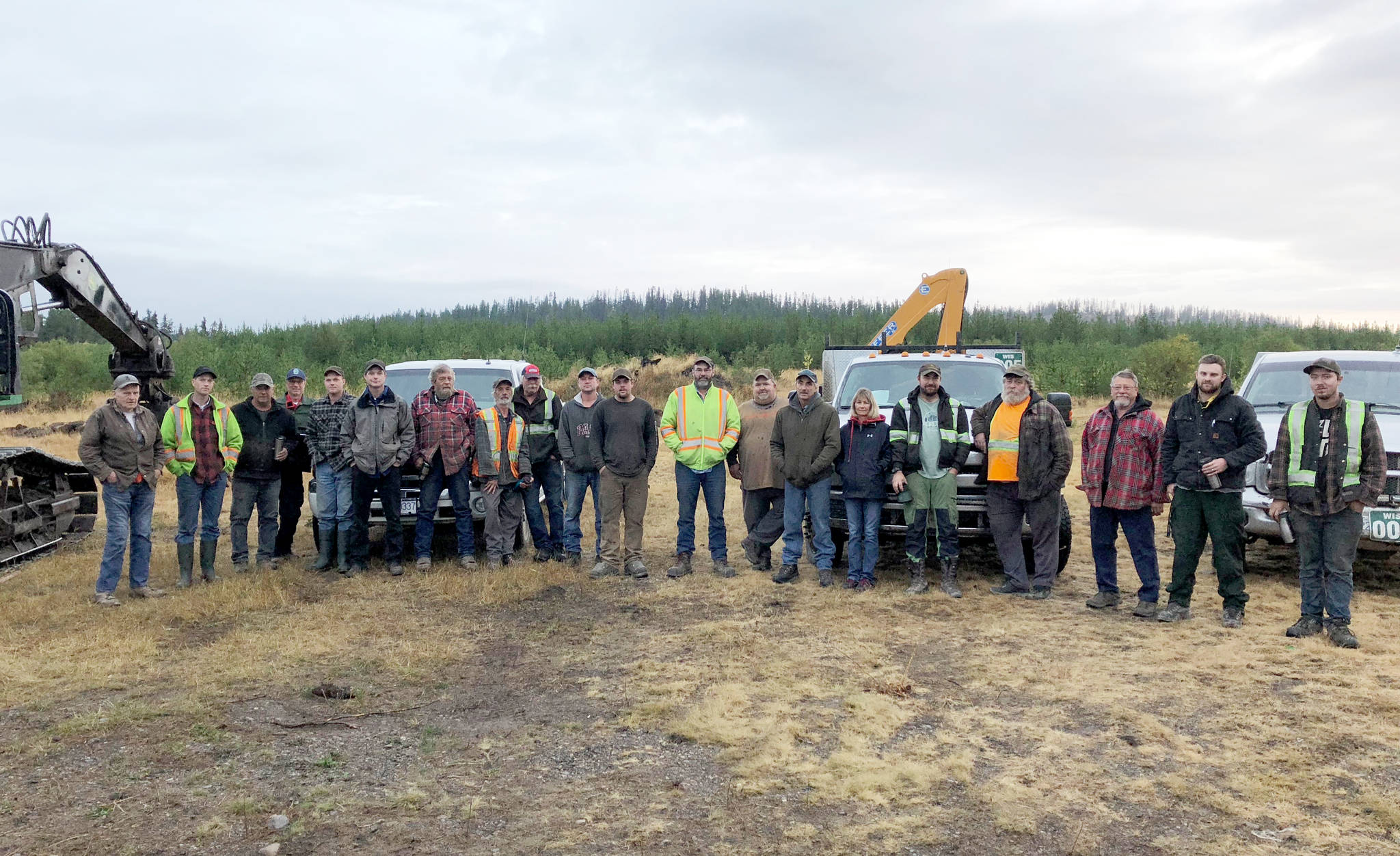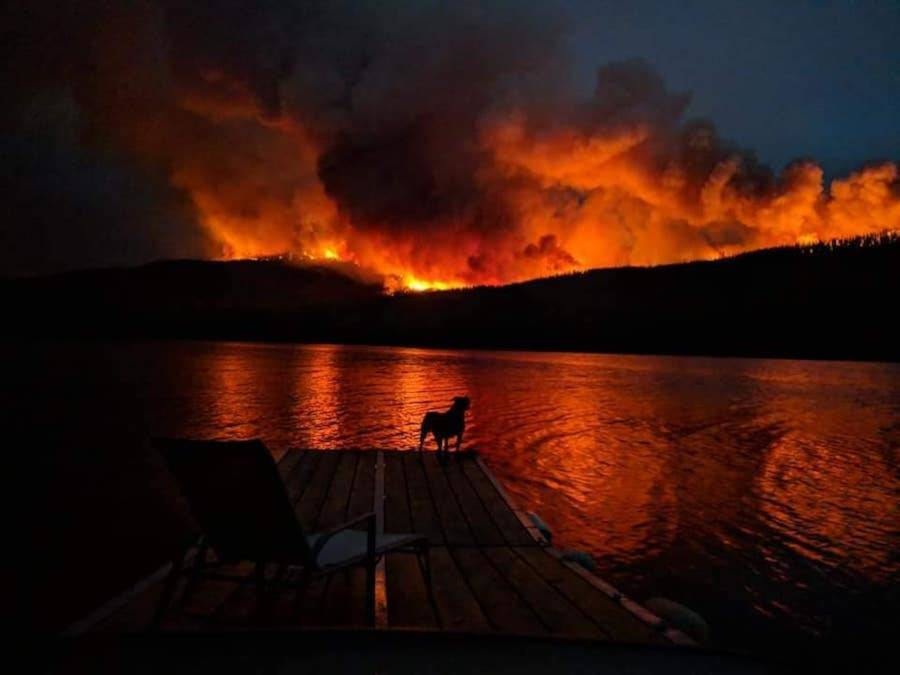Burns Lake area residents faced unprecedented challenges this summer, which is now considered B.C.’s worst wildfire season in history.
Massive wildfires raged simultaneously in the region while several evacuation orders and alerts were in effect. Meanwhile many residents south of Burns Lake who chose not to abide by evacuation orders were running out of basic supplies because they were not allowed to return to the area known as Southside if they left.
To Nadina Lake Lodge owners Brad and Wendy Thompson, their summer experience was a “rollercoaster of emotions.”
“Having lived, worked and survived this fire from the day it started, we have experienced a rollercoaster of emotions,” they told Lakes District News. “We have had to close our business; our cleanup work has started and continues.”
“Our financial loss remains to be seen.”
Their business was about two km from the Nadina Lake Fire, which has consumed over 86,000 hectares.
The Thompsons used their resources to support firefighters.
“Setting up the lodge to house and feed many firefighters during this event was a great, challenging and eventful experience,” they said. “We were glad we had the opportunity to do that.”
Southside residents work hard to battle fires
Wistaria residents Gary and Julie Blackwell, who also chose to stay behind, were part of a crew comprised of over a dozen local residents who helped fight the Nadina Lake Fire.
“We were working on the east side of the Nadina Lake Fire putting in fire guards, trying to keep the fire away from the communities east of Nadina Lake Road,” they described. “We had a crew running dozers, bunchers, skidders and water tenders.”
“People have no idea how hard these people worked to try and stop the fire.”
The Blackwells said that not being able to move freely between the Southside and Burns Lake made it impossible for them to access basic supplies such as food.
They added that The Postmen, a group that’s been offering disaster relief to evacuees and frontline workers in the Lakes District, helped them a great deal by bringing much-needed supplies to the Southside area.
In addition, the Blackwells said there were crucial times when air support would’ve made a big difference, but that this type of resource was often unavailable.
“With air support this fire would never have advanced towards the Tatalrose area,” they said.
Bill Miller, Regional District of Bulkley-Nechako chair, agrees that air support was lacking in the Burns Lake region.
According to the Ministry of Forests, Lands, Natural Resource Operations and Rural Development, the province had 270 aircraft supporting their efforts during the 2018 season.
“We’re aware of the complaints about not enough resources in the early stages of the wildfires,” said the ministry in a statement. “The BC Wildfire Service prioritizes resources where needs are greatest with human life and safety being the number one priority in extinguishing new fire starts.”
“After each significant wildfire season, the BC Wildfire Service reviews actions to learn what worked well and what needs improvement,” the ministry added. “That will occur again this year.”
Slow wildfire response
Noralee Resort owners Jim and Bonnie said a quicker wildfire response would’ve prevented the Nadina Lake Fire, which was discovered July 31, from growing out of control.
“We could see smoke across the [Francois] Lake towards the Southside for a week, just smouldering; no attempts were made to put it out,” they described. “Wind came up and the fire took off.”
“After some media attention then they [BC Wildfire Service] realized they needed to put up fire guards to stop the fire from heading towards Burns Lake.”
Evacuees supported by community, not government
According to Ken Nielsen, Chinook Community Forest’s general manager, there should’ve been more support from local governments to evacuees.
“When Burns Lake goes through this again, [it would] be nice for both local governments [Village of Burns Lake and Regional District of Bulkley-Nechako] to step up to the plate and support their residents,” he said.
“Leave the firefighting to the locals, industry and licensees,” he added.
During the wildfire season, the village provided evacuee camping at Spirit Square, free showers for evacuees and firefighters, and accommodations to firefighters at the Curling Rink. The regional district implemented evacuation orders and alerts based on input from local residents, and eventually offered permits for people to take supplies to Southside residents. They also helped coordinate assistance offered to evacuees by Emergency Support Services and the Canadian Red Cross.
READ MORE: People with permits now allowed to take supplies to Southside residents
According to Cheslatta Carrier Nation Chief Corrina Leween, service gaps for evacuees were filled by community members and local First Nations.
“The most favourable outcome of this disaster was the way the community came together to provide immediate assistance to the evacuees,” she said. “Community members came together in different capacities to help out.”
She also points out that communications between different levels of government, First Nations and the community need to improve.
“This fire has been a good example of how vulnerable we become when we have limited access and limited connectivity,” she said. “I am hoping that in the future, if we experience similar disasters, that formal protocol is in place for all to use collectively.”
@flavio_nienow
flavionienow@gmail.com
Like us on Facebook and follow us on Twitter.

